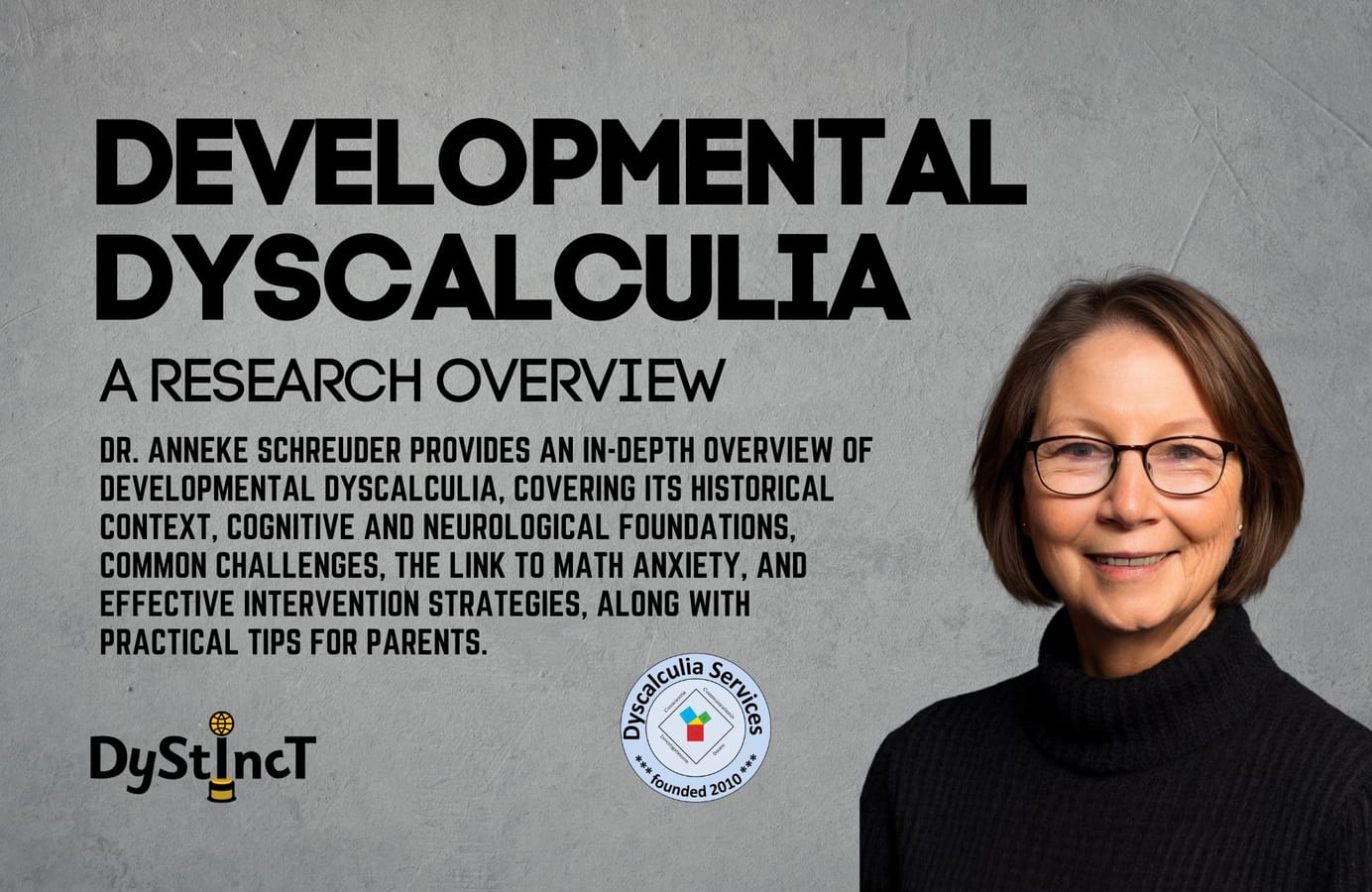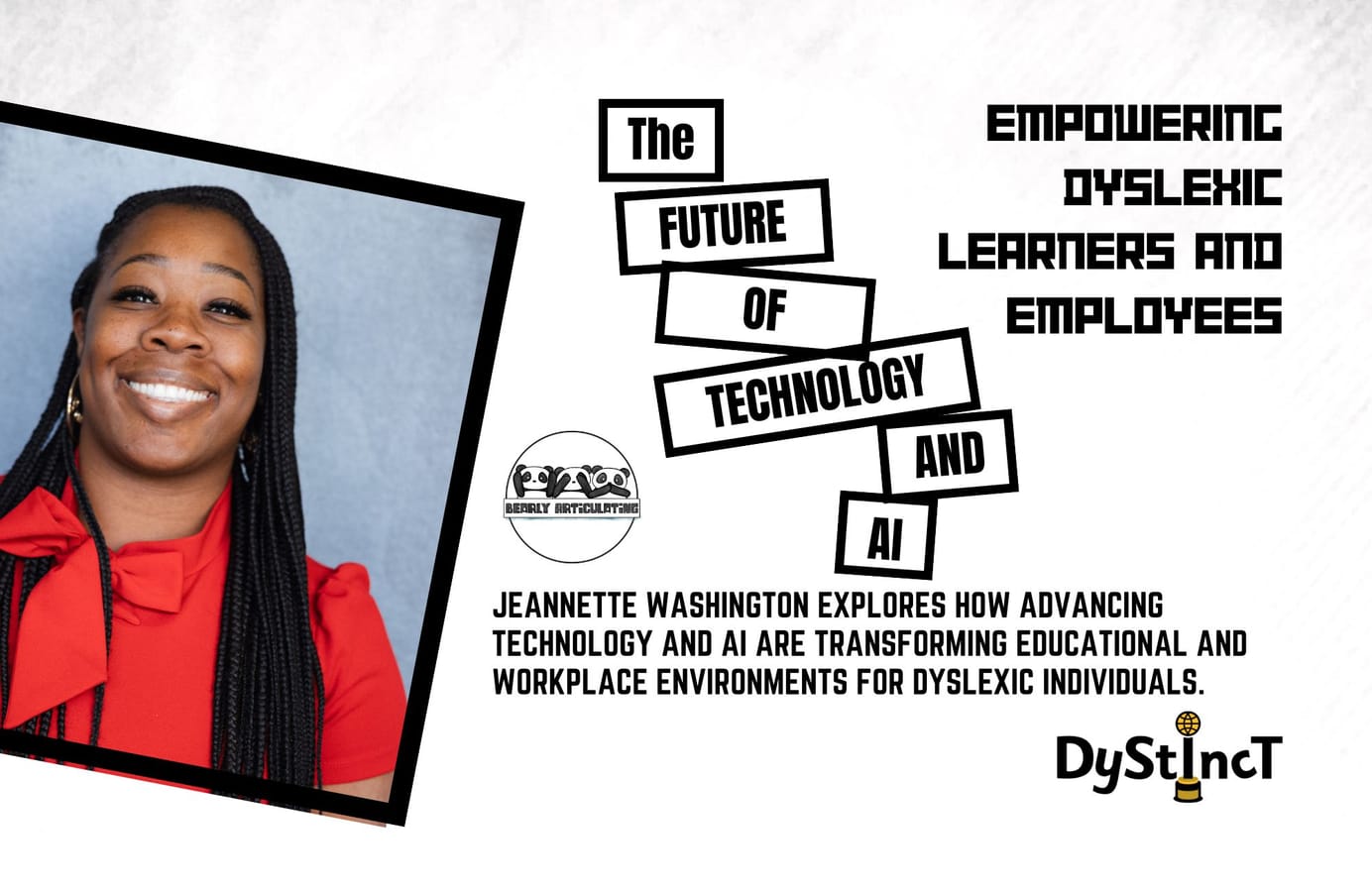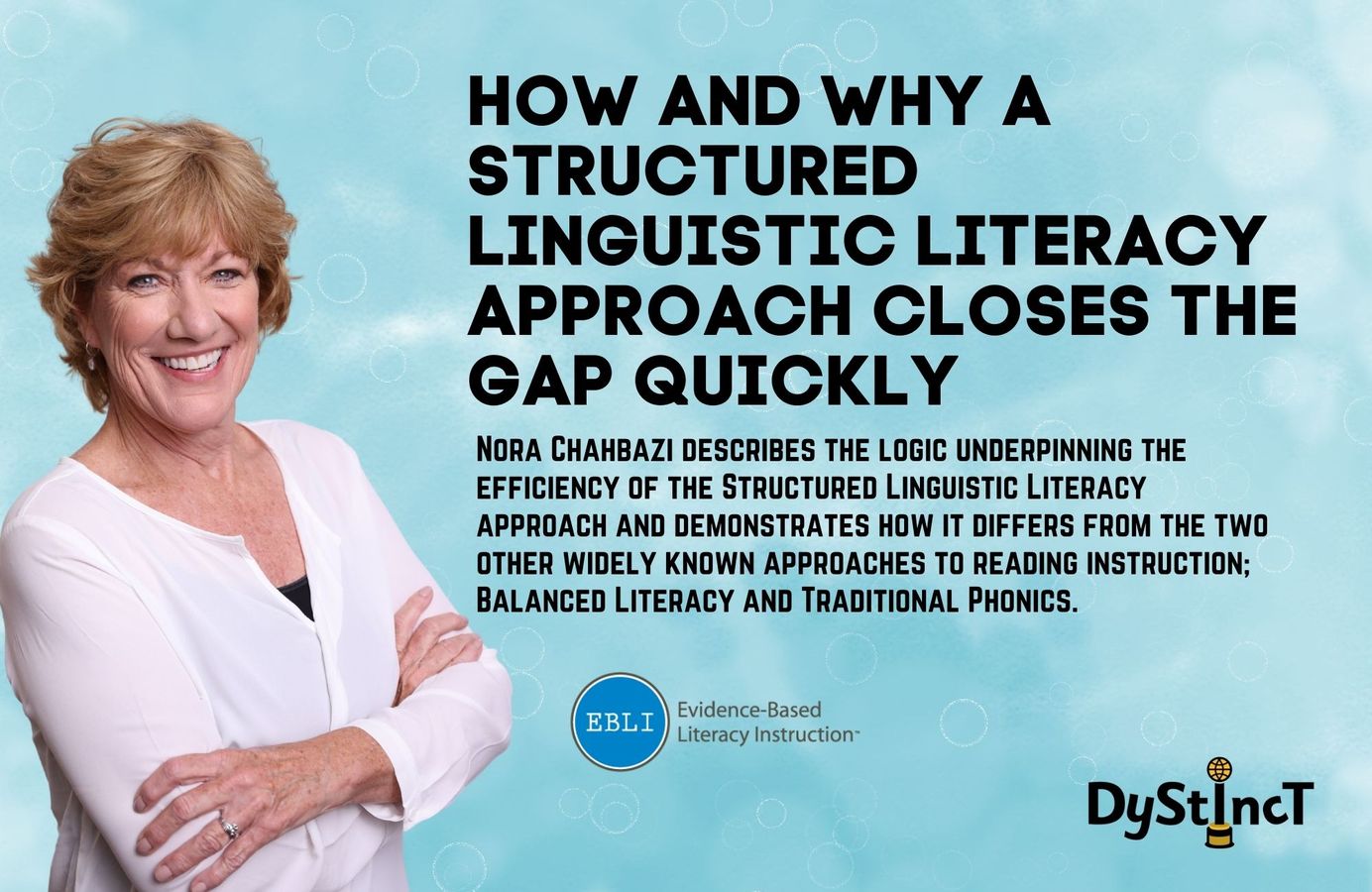
Issue 13: How and Why a Structured Linguistic Literacy Approach Closes the Gap Quickly | Nora Chahbazi
Nora Chahbazi describes the logic underpinning the efficiency of the Structured Linguistic Literacy approach and demonstrates how it differs from the two other widely known approaches to reading instruction; Balanced Literacy and Traditional Phonics.
The most widely known processes used for teaching or remediating reading fall under two umbrellas: Balanced Literacy and Traditional Phonics. However, there is a 3rd way that has been around for decades and has largely remained hidden away and taught by a smattering of teachers and interventionists. This methodology has been referred to by many different labels, Speech to Print and Linguistic Phonics being the most common. Unfortunately, each of those terms can be confusing because they’re used to describe several things. In an attempt to have a common language, the term Structured Linguistic Literacy has recently been created to differentiate this methodology from Balanced Literacy and Traditional Phonics.
What do I need to do differently?
Whether a beginning kindergartener or a person of any age who is sub-literate and in need of remediation, the effectiveness and efficiency of instruction are of utmost importance. The goal is to get every learner to achieve, as quickly as possible, a high level of accurate, automatic reading, as well as writing and spelling. These skills allow them to live in the world as a highly literate citizen.
With the most recent NAEP 4th grade reading proficiency scores in the United States at a dismal 33%, it is obvious that the goal of high-level literacy for all continues to elude us. Proficiency scores for 4th graders in the US have been below 40% for decades. Why does this horrific statistic remain so constant? What can we do about it?
The questions of how we teach children to read and how we remediate learners need to be at the center of this discussion. The question that is always at the forefront of my mind when teaching a student or training an educator - especially when the progress of learning has stalled - is this: “What do I need to do differently?” Until 95-100% of our learners are proficient at reading, we have no room to rest on our laurels.
Structured Linguistic Literacy is an explicit, systematic instructional approach that, right from the beginning, begins with instruction rooted in something which almost every child has some experience with when they come to school - spoken words. Structured Linguistic Literacy starts with words, segments a word into the individual sounds, provides a placeholder for each sound, provides the student with the letter(s) that spell the sound, and then teaches them how to blend the same sounds together. This helps them connect the sounds to create the word. Oral language, or learning to talk, is natural. The process of learning to read and write is manmade; it is not natural.
The process of learning to read is not natural.
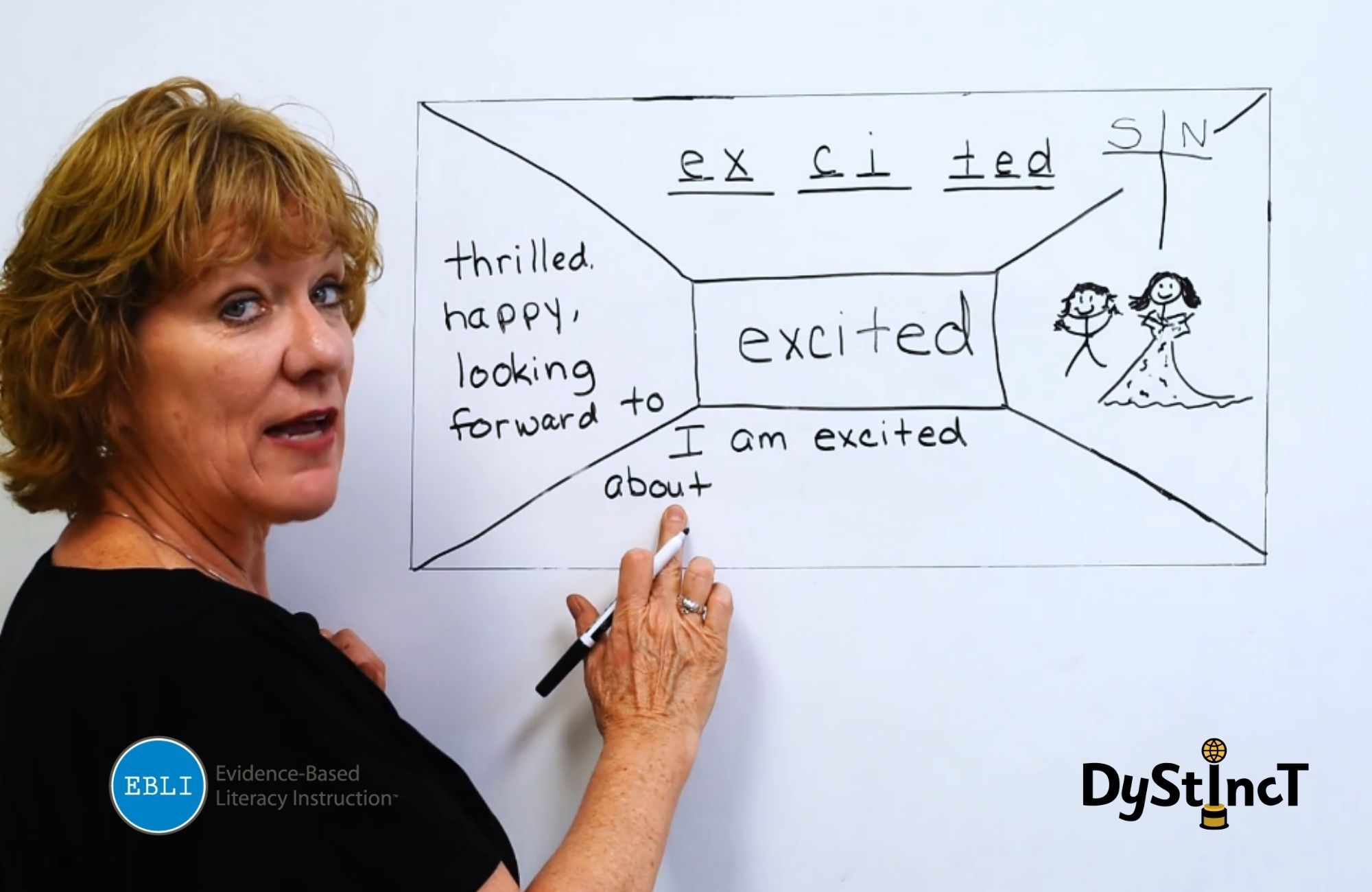
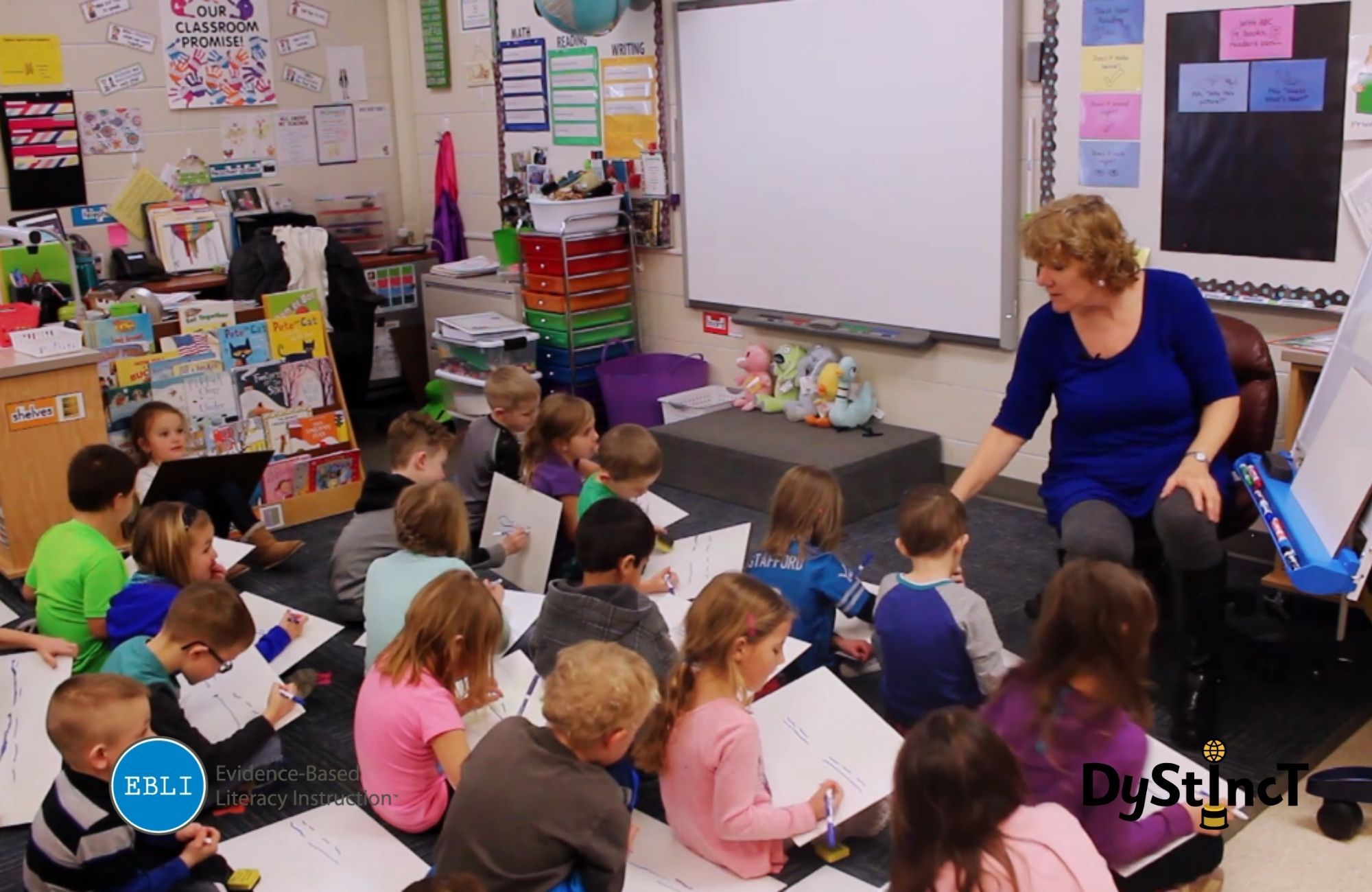
The alphabet is a system created a few thousand years ago, made up of a (mostly) agreed upon and often shifting code. This code is used for the purpose of communicating with each other via print. Reading is the process of getting information off the page that was written by someone else, and writing is the process of putting thoughts or information on the page so a person, or many, can read it at a later time. While the concept of an alphabetic code was a great invention, the English alphabetic code is an especially complex one. Because English spellings were borrowed from several different languages, there are many unique nuances that make it very confusing if the logic of the system is not learned. The Structured Linguistic Literacy approach teaches the logic of the English alphabetic code from a unique and different approach that helps learners more easily apply this code to accurate, automatic reading and spelling. It is revolutionary and very different from other approaches to teaching foundational reading.
Balanced Literacy is an approach with some teacher-led instruction, typically in the form of a short mini-lesson - about 5-10 minutes - and an abundance of independent or partner learning. The premise is to have students do a majority of learning to read by reading in books, especially books at their level. Various strategies are taught, such as looking at the picture, saying the first sound and guessing, memorizing part of the text, substituting a word that might make sense, and using context clues. A drawback of this approach is that the foundational decoding instruction is more implicit than explicit, and many learners fail to understand how the code works. Because of this, ineffective and inefficient practices such as guessing, memorizing words, and looking at the picture are deeply embedded and lead to chronic misreading of words, which leads to low or no comprehension and poor spelling.
Traditional Phonics typically consists of explicit, systematic instruction with the main focus on the code, or letters, and then works to manipulate it into speech sounds in words. There are 44 sounds in English, but over 150 spellings to represent those sounds. Because of this discrepancy, teaching the code with the letters (graphemes) as the starting point requires significant maneuvering. With Traditional Phonics, this is done with the use of phonics rules and exceptions to rules, as well as syllable types and rules. A drawback of this approach is the extensive cognitive load as well as the confusion (for both learners and those who are teaching them) caused by the inconsistency of the rules. With this approach, learning to read accurately at a high level can take an exceptionally long time, and the reading of trade books or authentic texts can be delayed for years.
The Structured Linguistic Literacy approach begins instruction with a word, breaking each word into its individual sounds, providing the letter(s) that represent the sounds (spelling), and then blending those sounds back together to read the word. Reading and spelling are taught in the same activity and with the same process since these processes are reversible and utilize the same code. For emerging readers, once the simple code (1 letter representing 1 sound) is taught and applied, they move on to instruction in the more complex code. Words containing the complex code utilize concepts that are unique and common in English:
- 1, 2, 3, or 4 letters spell a sound (am, she, sigh, dough).
- The same sound can be spelled in many ways (/s/: sit, miss, nice, horse, cent, listen)
- The same spelling can represent different sounds (‘s’: /s/ in ‘sun’, /z/ in ‘is’, /sh/ in ‘sure’)
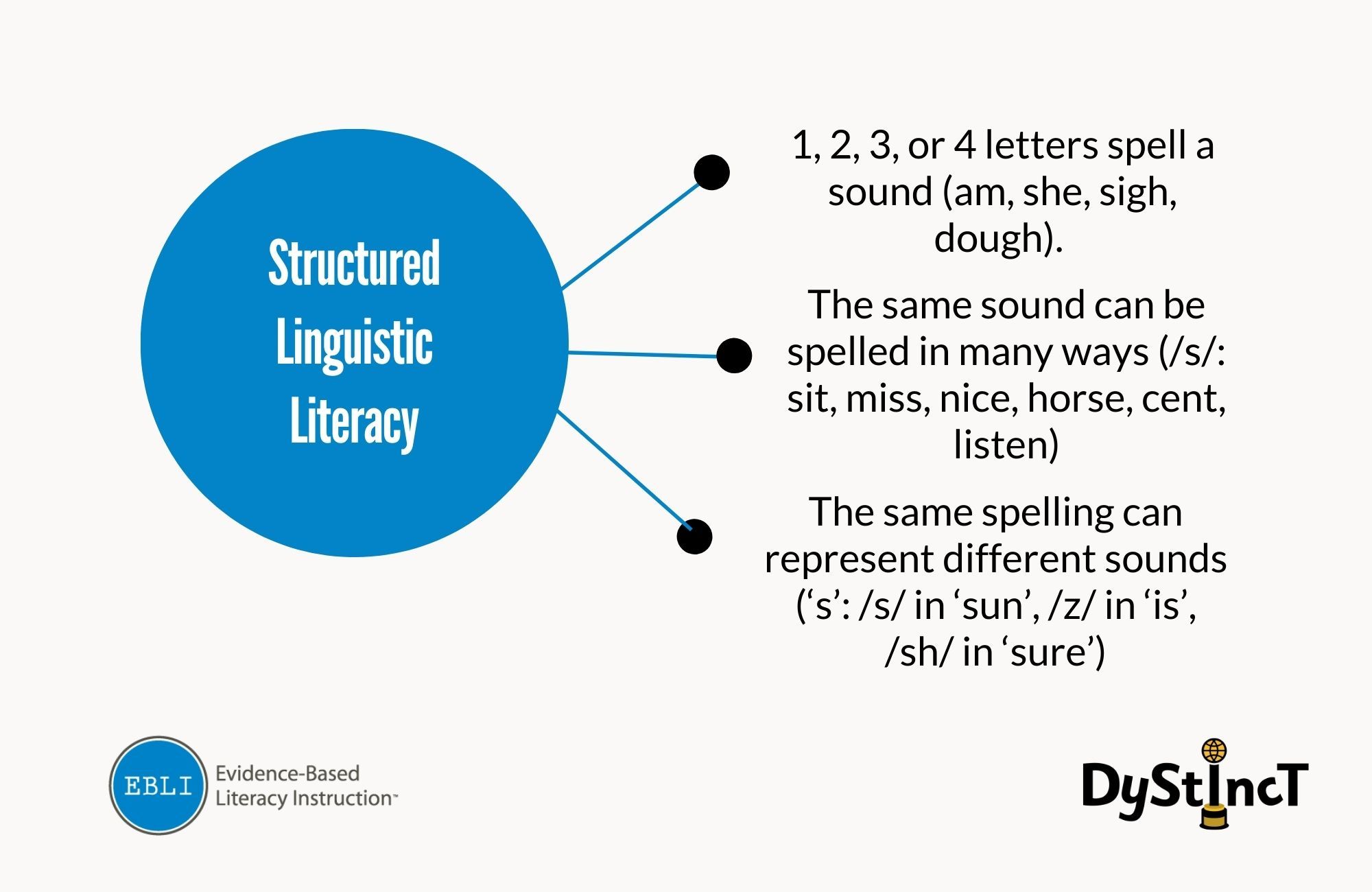
Many spellings for a sound can be taught at once, even to emerging learners, once they have been taught the simple code. Similarly, many sounds that go with the same spelling can also be taught. Patterns are emphasized, and application to accurate reading in text and accurate spelling in writing is part of instruction.
With EBLI and some other methods and programs teaching with the Structured Linguistic Literacy approach, an abundance of Multi-Syllable word instruction, especially words with 3 syllables or more, is taught explicitly, early in instruction, and regularly for learners in 2nd grade or older. 4-6-year-old learners are also taught to decode Multi-Syllable words; they start the process with 2 syllable words. This instruction with multisyllabic words facilitates vocabulary by teaching prefixes, suffixes, and root words in context. Like with patterns in one-syllable words, this information can then be applied to other words containing the same patterns even when those words have not been taught to them explicitly.
Once learners understand the logic of the English alphabetic code and these concepts, they can read text that has code that they have not been taught explicitly, as the concepts are utilized across all reading and spelling. The system of logic – alongside the process - is more integral than the content taught. Mastery of concepts and skills is obtained over time with instruction that spirals and interleaves what has been learned by the student to help advance further learning.
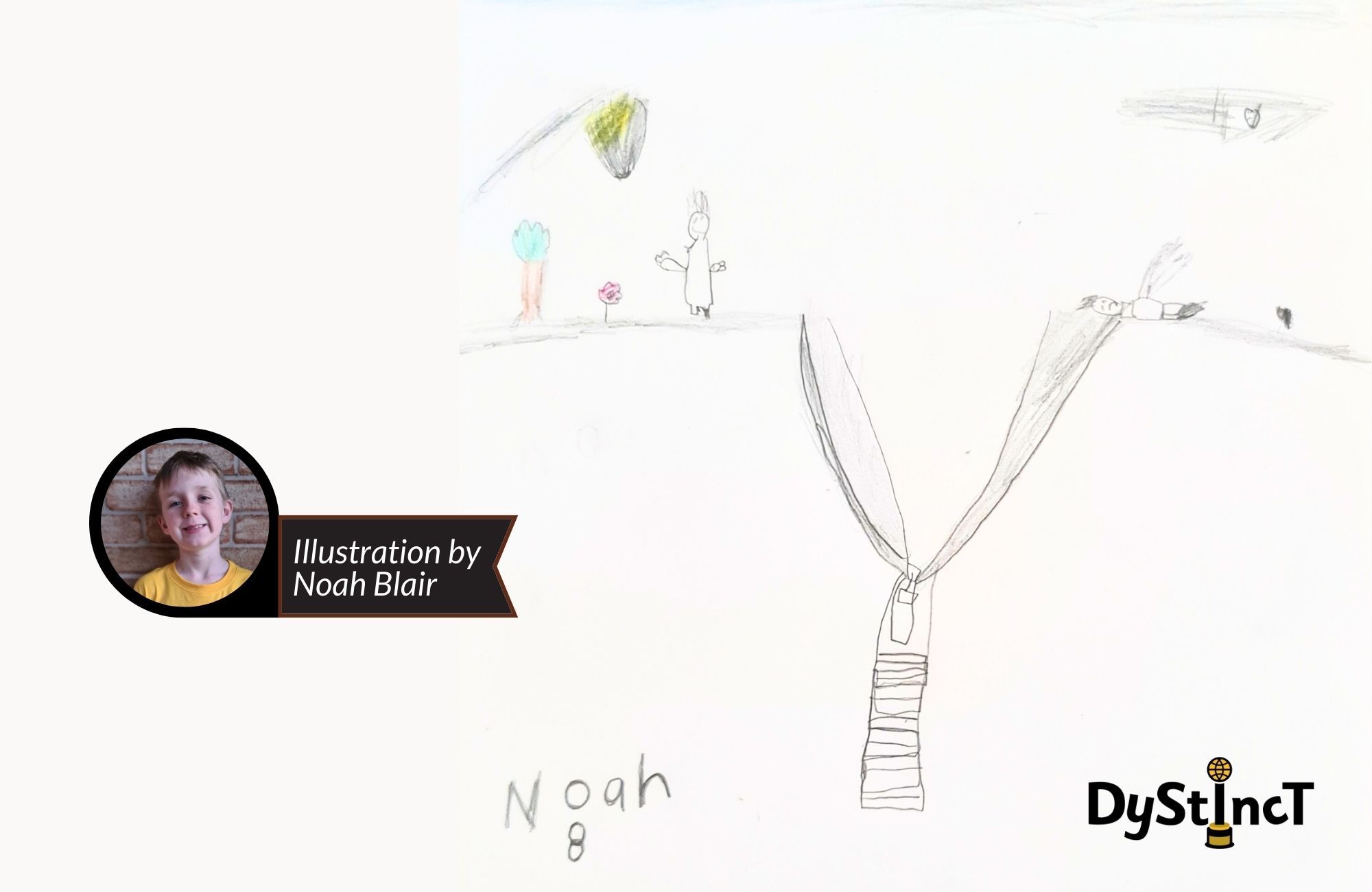
Students move quickly to the Orthographic Mapping process with Structured Linguistic Literacy instruction because when the logic of the English alphabetic code is understood, the self-teaching hypothesis is activated quickly. With a Structured Linguistic Literacy approach, learning is greatly accelerated, and the ability to move to accurate and automatic reading in trade books happens rapidly. This is even true with young, emerging readers.
High-level literacy for all learners is the goal of everyone who teaches reading and spelling. Keeping a laser focus on moving 95-100% of our students quickly to this level of literacy is a goal that, ideally, is universal. Constant evolution and new learning by each of us who teach children is necessary to reach this goal. A Structured Linguistic Literacy approach helps teachers, and students, expedite the process.
High-level literacy for all learners is the goal of everyone who teaches reading and spelling.
Nora Chahbazi
EBLI (Evidence Based Literacy Instruction)
eblireads.com | Facebook | Twitter | YouTube
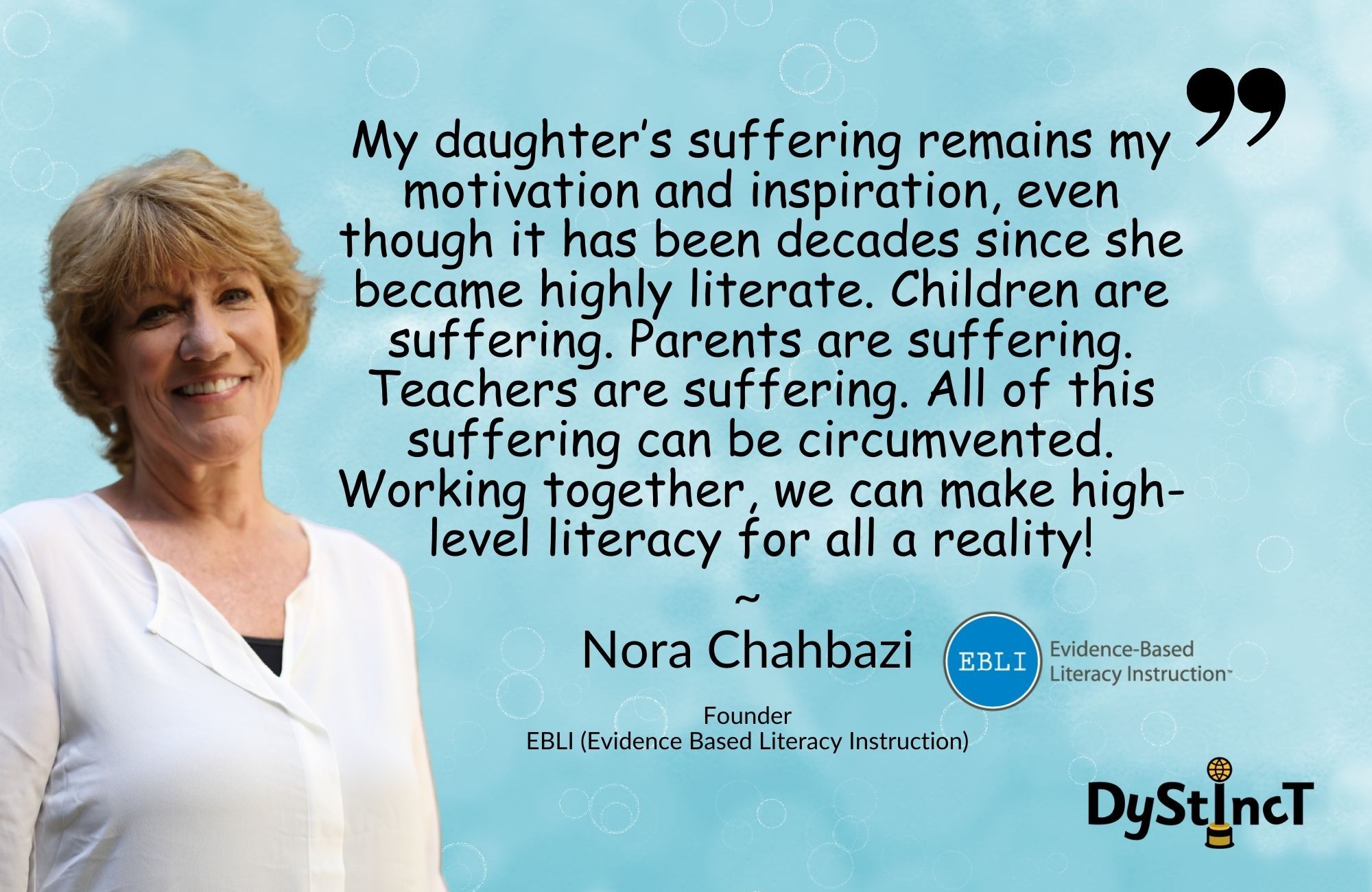
As a leading literacy expert, Nora has spent 20+ years revolutionizing reading instruction. She has received recognition for her lifelong work in the form of several noteworthy nominations and awards, including the Editor’s Choice Award from Celebrity Press, the Quilly Award from the National Academy of Best-Selling Authors, and the Literacy Champion Award from DNA Films. She is a published author worldwide and has been featured in multiple literacy development articles and books. Nora is a featured speaker across the nation and has collaborated with universities to advance research and development of reading. She is the literacy consultant for the upcoming documentary The Truth About Reading. Nora has been featured in multiple TV and radio interviews and podcasts, including APM and Oprah Radio (where she was interviewed by Maya Angelou). Her life’s work is to teach the world to read.
Extracts from Dystinct Magazine












